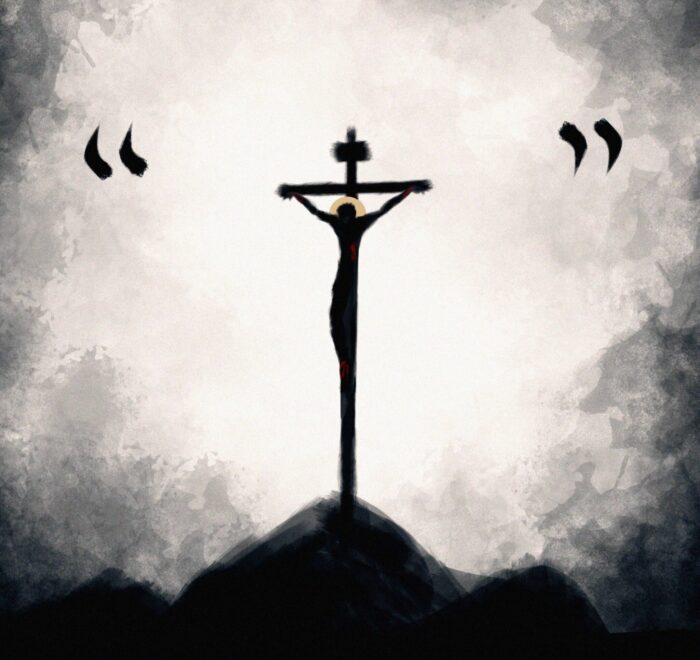“One thing I have asked of the LORD, and that will I seek after: that I may dwell in the house of the LORD all the days of my life, to gaze upon the beauty of the Lord and to inquire in His temple.”
– Psalm 27:4
The First Two “Spheres”
So far our series on Beauty and the Cross has examined the first two “spheres” of beauty that Jonathan Edwards expounds in his essay on the mind. The first sphere is Simple Beauty which is essentially the consent (agreement) of form, shape, color, etc. between objects narrowly considered.
The second sphere is Complex Beauty. In Complex Beauty, the beauty of a thing is determined by its consent not just to one or two others, but to an entire overarching pattern
This means that something might seem “beautiful” in and of itself, and yet – because it dissents with greater harmony of reality – be exposed as an instance of disfigurement. In the same way, something that seems “disfigured” in isolation may well be revealed as an integral element to the overarching beauty of a greater narrative, and thus a beautiful thing when rightly considered.
Complex Beauty is a fascinating and paradigm-establishing concept and I’d love to delve more deeply into its implications for life under the Fall….however, for the sake of space, we will move on to the third sphere of Edwardsian beauty: Spiritual Beauty.
The Spiritual is More Real
“God is Spirit” (John 4:24), and because He is the source of all reality, the spiritual is more fundamental, more solid, “more real” (if such a thing can be said), than the physical.
Now, this does NOT mean that there is some sort of dualistic division between the spiritual and the physical. It does NOT mean spiritual = good, and physical = bad. No! “God likes matter, he created it.”[1] However, what the inherent fundamentality of the spiritual means is that, ultimately, everything has its roots in the spiritual.
Here’s what I mean: What is a desk? You might answer, “carved and shaped wood”. What is wood? “various vegetable fibers.” And what are they composed of “Molecules.” And what are they composed of? “Atoms.” And on and on we could go until finally, after quarks and neutrons and strings, the question, “And what are they composed of” can only be answered by, “Words. The words of God….God who is Spirit.”[2]
So, when I say the spiritual is more fundamental than the physical, I’m not calling the physical bad or evil and I’m not creating a sharp spirit/matter divide…what I’m saying is that the physical reality (in which we will eternally dwell) is rooted in the spiritual. The material is a fruit and outgrowth and “incarnation” (I use the term loosely) of the spiritual.
With that stated, back to the original point. Because God is spirit and because all things are from, through, and to Him (Rom.11:36), the spiritual is more fundamental than the physical. Edwards expresses this by calling the physical a “shadow” (by which he means a “dim reflection”) of the spiritual. Now, why is this important for our discussion of beauty? Because it means that the physical beauty that we perceive around us (paintings, songs, stories, mountains, people, animals, galaxies, etc.) is a dim reflection of a more fundamental beauty, Spiritual Beauty.
Spiritual Beauty
What, then, is spiritual beauty? Well, let’s look at its shadow/reflection. We’ve already said that sensory beauty arises from consent. When one thing consents with another (either on a simple or complex scale) we perceive beauty. At the sensory level, this consent concerns the agreement of various parts or elements or truths about different objects. However, what is “consent” at the spiritual level?
Edwards asserts that consent among “minds” (by which he means the understanding and willing spirit of humans or angels or, ultimately, of God Himself), consent among minds is the love of one mind/spirit for another. Consider that….LOVE, Edwards says, is what “consent” (beauty) looks like between spirits. What is the reality of which all sensory consent is a shadow? Love; the consent of spirit to spirit.
All the beauty that we perceive in the world…. a mountain range or Autumn day or symphony or fairy story or family meal or a man who dies for those he loves or a sorrow-seed that is harvested years later with joyful tears…….all the varying levels of consent in this world are ultimately dim reflections of a higher “spiritual” consent, namely, love. We call the consent of one object to another “beautiful” because the supreme beauty is the consent of one being to another, which is “love.”
Does this mean that “love” is always beautiful? No. it means that love rightly defined, love that consents to the great pattern of reality, is always beautiful. Love – like any other beauty – can be disfigured if it does not consent with supreme reality. And this “supreme reality” is God Himself. Love is beautiful only because the Triune God, from whom, through whom, and to whom are all things, IS love….that is to say, His Trinitarian life is the love and delight of Father and Son in the Spirit.
Staggering stuff….Let me try to express it in bullet points:
- God’s eternal, Trinitarian life is His love and delight in Himself (Father and Son loving and delighting in each other by the Spirit).
- This uncreated love is the supreme example of consent and therefore of beauty.
- An implication of this is truth is that Love = Beauty, and Beauty = Love.
- For spirits (now including both God and created spirits), “beauty” is one being’s love (consent) to another, since this reflects God who is ultimate love/beauty (more on that in the next post).
- Spiritual beauty, then = love (which is no surprise since we’ve already seen this to be true in God Himself).
- Now, the paradigm for what is beautiful is the same in regards to sensory objects as it is for the spiritual, the only difference is that what is called “love” among spirits is now merely called “consent” or “agreement” among objects.
- Therefore ALL true beauty either is or is a “dim reflection” of
Summary
Before we close, let’s take it all the way back to basics and solidify this concept of beauty as love (or its dim reflection).…above is figure 1, two consenting circles. We’ve said they are an instance of Simple Beauty because they agree in form and shape and color etc. Now, what the concept of Spiritual Beauty teaches us is that the consent (and therefore beauty) between these two circles is really a dim and blurred reflection of a much higher and much “more real” consent, namely, the Trinitarian love of God for God. The beauty of consenting shapes and forms or ideas and themes is merely a trickling sensory rivulet of the roaring torrent of God’s Trinitarian love. All beauty, therefore, is a picture of love and all love (rightly understood) is a picture of God.
Moving Forward
Wow. Lots of stuff covered in this post. And let me reiterate what I said before: these things are not impractical philosophical musings! I know there hasn’t been much scripture or gospel or looks to Christ in the last few posts…but we are still laying the foundation of a paradigm that I think will shed brilliant and scriptural light on the cross and our lives in this world.
For now, though, If it’s true that all beauty is ultimately a picture of the Trinitarian life of God…..then we are surrounded by more glory than we can begin to imagine. As Paul said, “His invisible attributes, namely His eternal power and divine nature,” are communicated to us through the things He has made. May we have eyes to see!
[1] C.S. Lewis, Mere Christianity
[2] An argument I first heard from professor Joe Rigney, Bethlehem College and Seminary




